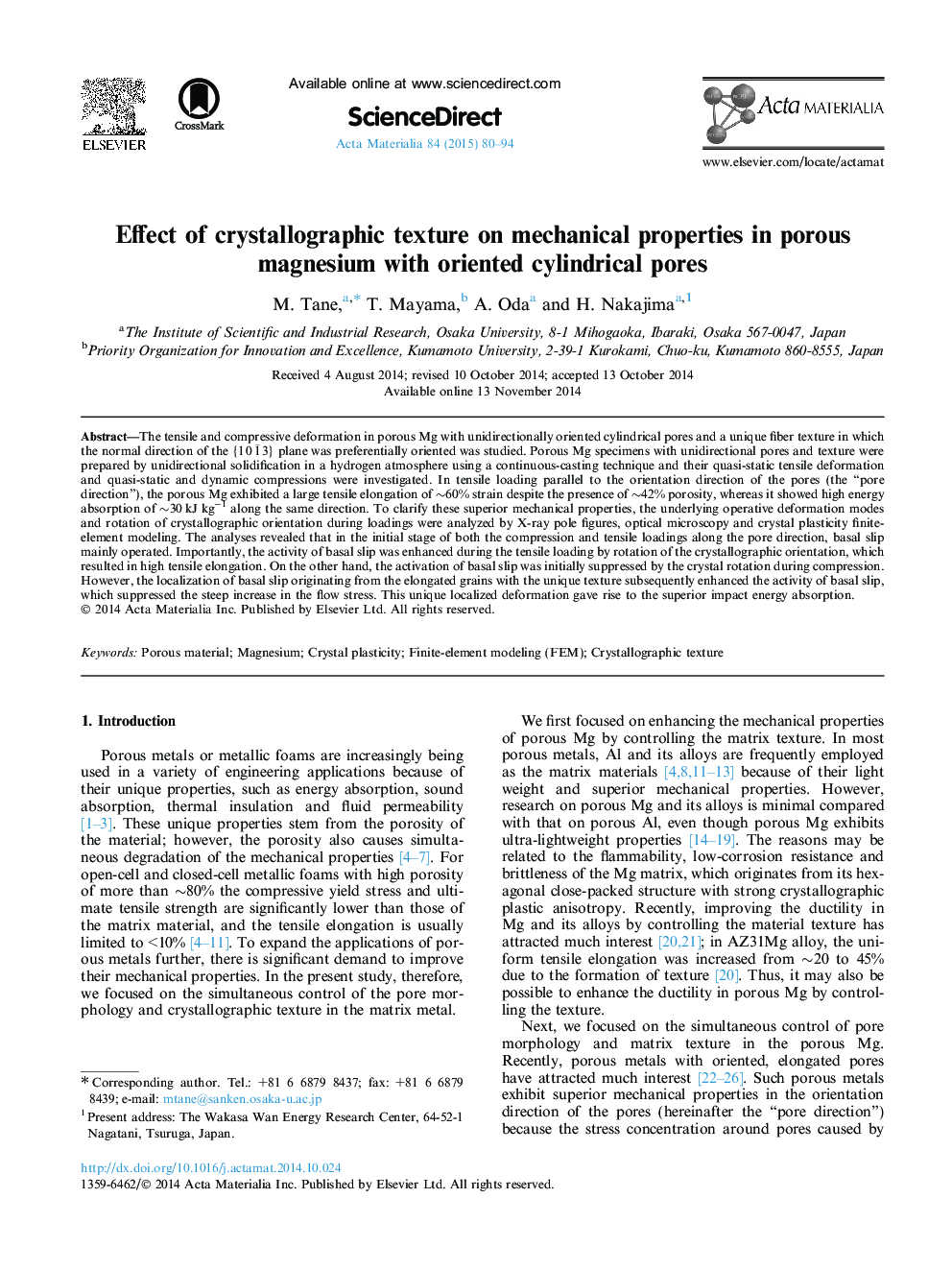| Article ID | Journal | Published Year | Pages | File Type |
|---|---|---|---|---|
| 1445418 | Acta Materialia | 2015 | 15 Pages |
The tensile and compressive deformation in porous Mg with unidirectionally oriented cylindrical pores and a unique fiber texture in which the normal direction of the {1 0 1¯ 3} plane was preferentially oriented was studied. Porous Mg specimens with unidirectional pores and texture were prepared by unidirectional solidification in a hydrogen atmosphere using a continuous-casting technique and their quasi-static tensile deformation and quasi-static and dynamic compressions were investigated. In tensile loading parallel to the orientation direction of the pores (the “pore direction”), the porous Mg exhibited a large tensile elongation of ∼60% strain despite the presence of ∼42% porosity, whereas it showed high energy absorption of ∼30 kJ kg−1 along the same direction. To clarify these superior mechanical properties, the underlying operative deformation modes and rotation of crystallographic orientation during loadings were analyzed by X-ray pole figures, optical microscopy and crystal plasticity finite-element modeling. The analyses revealed that in the initial stage of both the compression and tensile loadings along the pore direction, basal slip mainly operated. Importantly, the activity of basal slip was enhanced during the tensile loading by rotation of the crystallographic orientation, which resulted in high tensile elongation. On the other hand, the activation of basal slip was initially suppressed by the crystal rotation during compression. However, the localization of basal slip originating from the elongated grains with the unique texture subsequently enhanced the activity of basal slip, which suppressed the steep increase in the flow stress. This unique localized deformation gave rise to the superior impact energy absorption.
